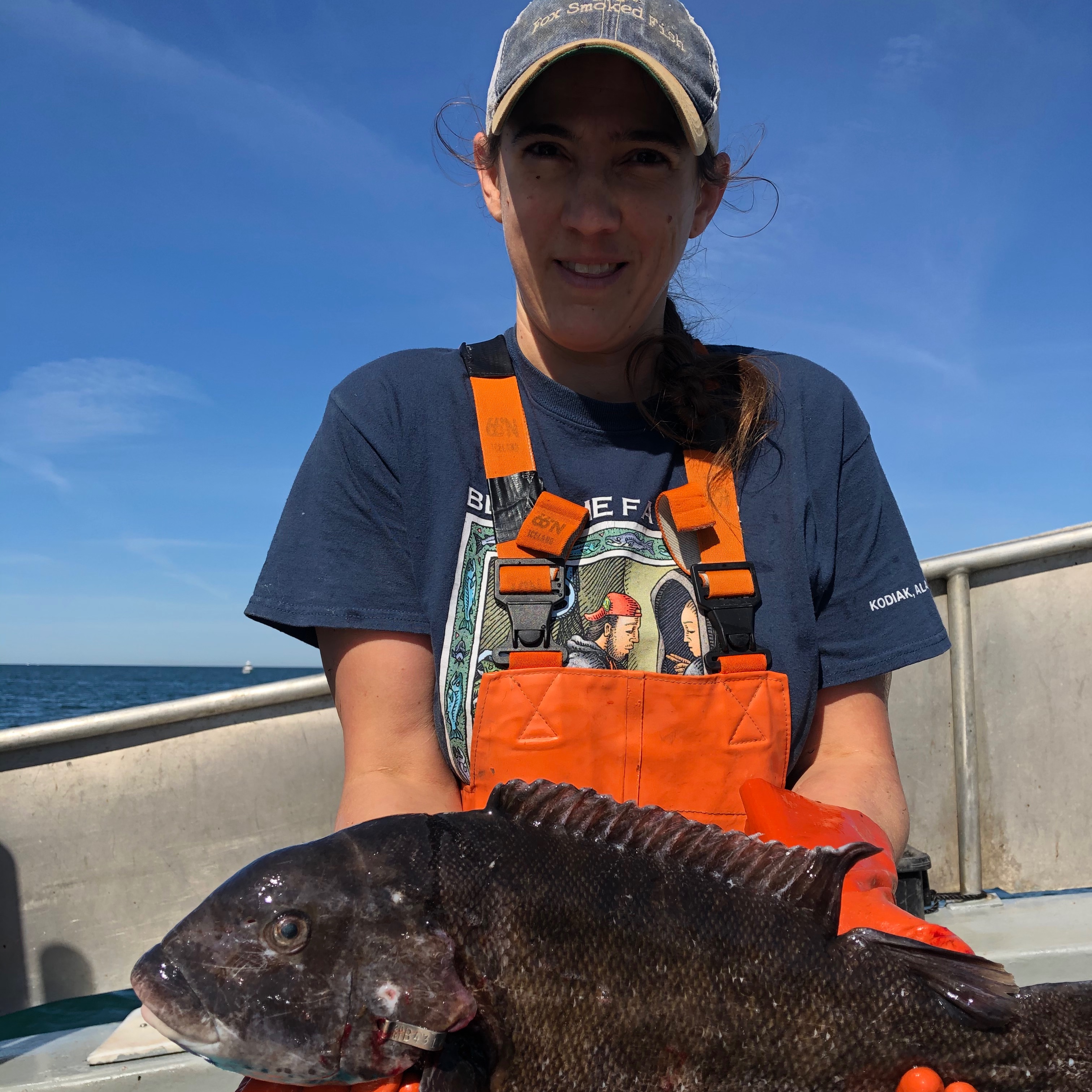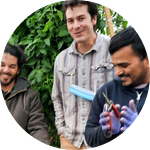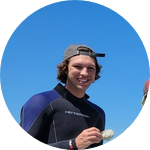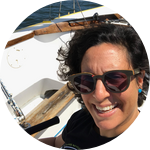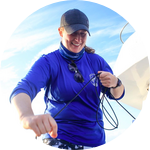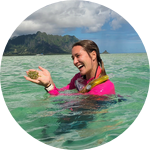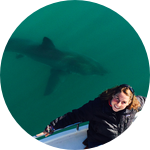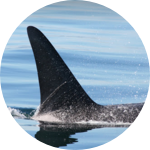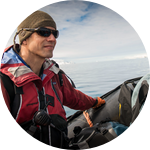
OceanX
Harnessing scientific, media, and philanthropic partnerships to accelerate change for the oceans
Projects
47
Measuring CO2 mineralization rates in a simulated ocean environment for the characterization of low-cost sensors
Direct air capture (DAC) of CO2 is a technology for low-cost and scalable carbon dioxide removal (CDR...
Are deep-sea metals powering bioelectrical eco-evolution?
The deep sea is enriched with metals and amazing life forms. Electroactive microbes can get energy from...
An Open Source Seawater Carbonate Analyzer for the Citizen Scientist
Measuring carbon dioxide parameters in seawater is crucial for understanding the impacts carbon dioxide...
Can cycling help clean up microplastics from beaches and conserve coastal ecosystems?
Our team is developing a microplastic removal machine to filter and strain contaminated sand effectively...
Establishing the first technological network for long term ocean observations in Costa Rica
Costa Rica lacks extended time series of oceanographic data. To address this issue, our goal is to deploy...
What can environmental DNA tell us about California's marine biodiversity?
A new molecular tool that identifies marine species from genetic material in water—“environmental DNA...
Establishing a baseline for microplastic accumulation in deep-sea animals using an historical sample archive
The deep sea is recognized as a hotspot for microplastic accumulation. While we are beginning to understand...
Improving the Knowledge of Skates and Rays in Trinidad and Tobago
Trinidad and Tobago is home to many species of skates and rays but exactly how many and their locations...
Super Slime Me: A Month of Living on an All Algae Diet
This study examines the effects of consuming only algae as a dietary source for a month. The subject, a...
Kelp Forest Restoration and Monitoring using Community Science
Since 2014, more than 96% of bull kelp in Northern California has been lost due to a combination of stressors...
A low-cost open-source audio-video array to identify fish sounds.
Many fish produce sounds that could be used to monitor them non-intrusively over long periods of time...
What kinds of supports are needed to enable a transition to a low-carbon US commercial fishing fleet?
The urgency of climate change and record-high diesel fuel prices are motivating commercial fishermen to...
Improving Soil Health with Oyster Industry "Waste"
Agricultural soils in The Gambia, West Africa, are highly acidic, which greatly reduces plant growth and...
Where are Rhode Island's Remaining Native Oysters?
Natural Oyster abundance in Rhode Island has been declining and is in need of a restoration plan. In collaboration...
Can a low-cost camera system help conserve the deep-sea biodiversity of Ticao-Burias Pass (Philippines)?
The Manta Bowl is a seamount located within the second largest protected seascape in the Philippines. Due...
When do the corals in our reefs spawn?
The timing when corals release their eggs and sperm to reproduce is an extremely complex topic. However...
Microplastic Monitoring Network in Islands and Coastal Zone
The coast of Santa Catarina represents 7% of the Brazilian coast and contains 6 areas relevant to conservation...
Magnets as blue shark deterrents?
Blue sharks (Prionace glauca) are the most commonly caught species of shark globally. They are usually caught...
Laser directed infrared spectroscopy to analyze microplastics down to 20 microns and speed up data analysis
Microplastic analysis is a very time-consuming procedure while smaller-sized plastics (<300 microns...
Harnessing New Technologies for Mapping Montserrat’s Marine Megafauna
In a first for the island, a locally-led initiative will survey Montserrat's marine environment, to identify...
Using drones to find ghost gear in Koh Phangan, Thailand & study the impacts on marine megafauna
Koh Phangan is situated in the Surat Thani Environmental Protected Area, a region of diverse marine wildlife...
What are Critically Endangered hammerhead sharks doing in the waters off Miami?
Great hammerhead sharks were recently assessed as Critically Endangered by the IUCN Red List. Our research...
Can we use a smartwatch for coastal monitoring and research?
The best sensor is the one you’re already wearing. Smartwatches contain sensors already used by scientists...
Increasing Sustainable Kelp Farmers' Yields With an Automated Twine Wrapping Device
In response to the climate crisis and fears of food insecurity, regenerative kelp farming is emerging as...
How does urea loss through gills vary by shark species?
Sharks use solutes, such as urea, to prevent cellular water loss. While the mechanisms of urea retention...
Studying the World's Largest Invertebrate - the Colossal Squid, Mesonychoteuthis hamiltoni
We are launching a multi-year expedition to film a colossal squid in the deep sea for the first time off...
Can we identify spawning events in deepwater snappers and groupers?
Nearshore deepwater fisheries are expanding in the Caribbean as coastal fisheries decline. Because deepwater...
What is the known diversity of Somali waters?
During Somalia’s 30-year-long civil war, my country lost many of our marine scientists. Now, Somalia lacks...
Using citizen science to gather data to inform sea turtle conservation in Trinidad and Tobago
All 5 sea turtle species in T&T are considered globally Threatened by the IUCN. Effective conservation...
Could Hawaii seagrasses be facing extinction?
Seagrass meadows are vital for the health of the ocean because of their ability to absorb carbon from the...
Do deepwater corals eat microplastics?
We aim to provide the first report of microplastic presence (or absence) in deepwater corals. Deepwater...
Adapting genetic technology for marine conservation
Protecting the ocean's biodiversity is essential for the health of the planet and communities. Marine Protected...
Are sharks contributing to salmon declines in the Pacific Northwest?
Many research and conservation efforts are dedicated to managing species like salmon, and these often try...
Understanding seal behavior with artificial intelligence
Seals are important indicators for the health of our oceans, but it is often difficult to monitor their...
Can low-cost, DIY hydrophones identify orca matrilines in real-time?
At Orcasound, we use underwater microphones (hydrophones) to monitor and conserve the endangered orcas that...
Using genetics to assess spatiotemporal variations in recruitment of native and introduced mullet in Kaneʻohe Bay, Oʻahu
Native mullets (ʻamaʻama) are vital to Hawaiian aquaculture. In Kāne‘ohe Bay, yearly recruit abundance is...
Effects of marine pollution on Halophila hawaiiana
Halophila hawaiiana is a Native Hawaiian seagrass that creates a habitat relied on by many organisms. H...
Could newly discovered deep-water kelp forests in Galapagos act as climate change refuges?
Following the discovery of extensive deep-water marine forests made up of rare tropical kelp species in...
Low-cost monitoring of red tide and its viruses in the Philippines
HAB (harmful algal bloom/red tide) is a public health concern. Here, we are interested in the interaction...
Can corals acclimate to higher temperatures?
Urgent action is needed to protect coral reefs in the face of a changing climate. In Hawaiʻi, outflow from...
Characterizing the deep sea habitats of the Seychelles using new, affordable deep-sea technology
The deep sea makes up more than 90% of our ocean yet receives little attention due to poor access to technology...
Can ocean spray seed ice crystals in clouds?
It has been suggested that diatoms and other ocean biologics are transported to the atmosphere when waves...
Optimizing nitrogen loading in a micro nursery for nori
Edible seaweeds provide a sustainable source of healthy food and ecosystem services, including habitat for...
Tracking non-breeding endangered Benguela seabirds to inform conservation strategies
Cape Cormorants and Cape Gannets are Endangered seabirds that primarily feed on sardine and anchovy . Although...
Can we identify individual manta rays in real-time using AI and remote technology?
This project combines AI, high-resolution cameras, and existing manta behavior research to test a program...
Can we improve the survival of larval yellow tang by understanding its microbiome?
Yellow tang are vital to Hawaii’s reef ecosystems, but wild populations have been drastically declining...
Do humpback whales have lasting social bonds and long term relationships?
Humpback whales were once wrongly considered solitary. However, recent research has shown that they can...











